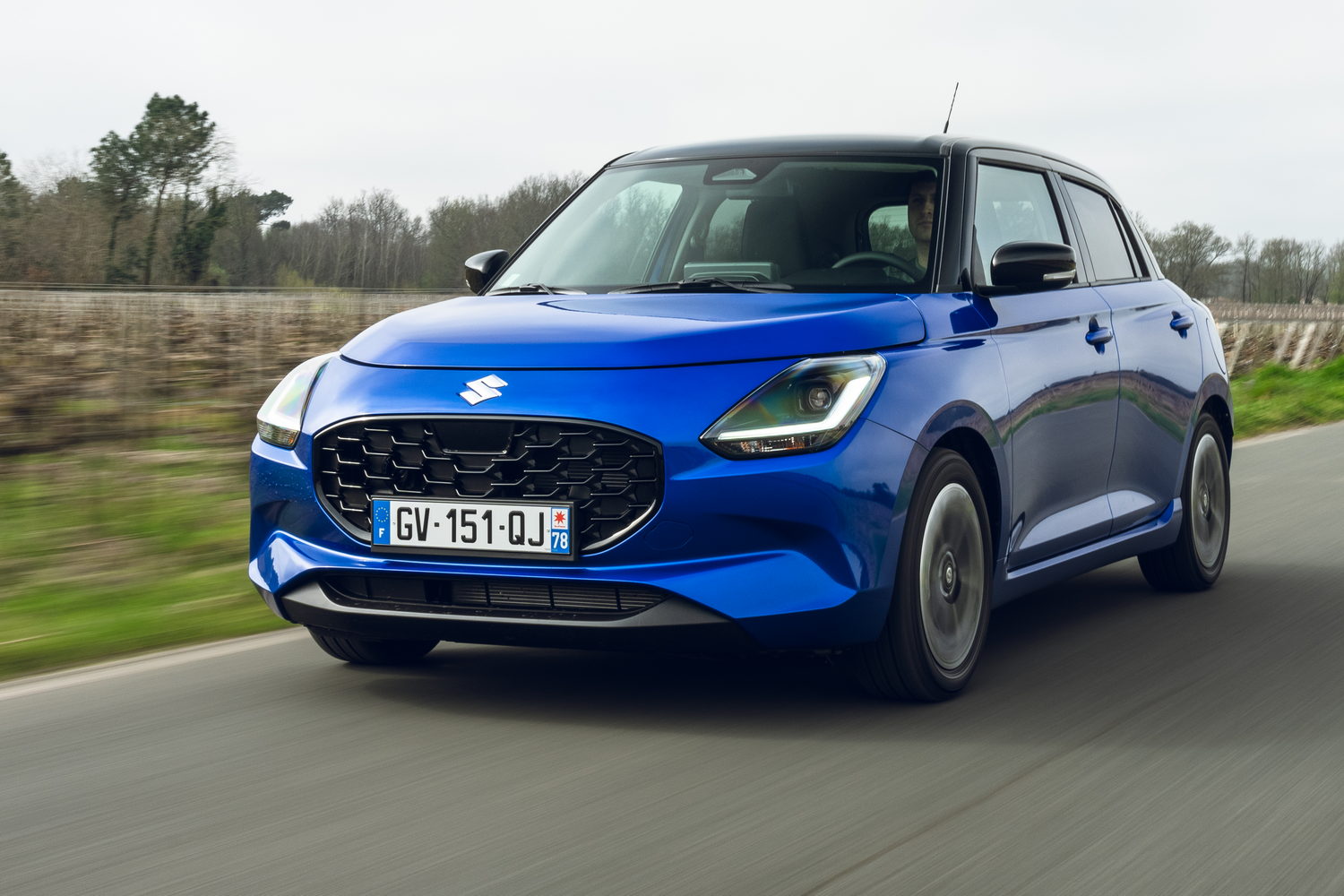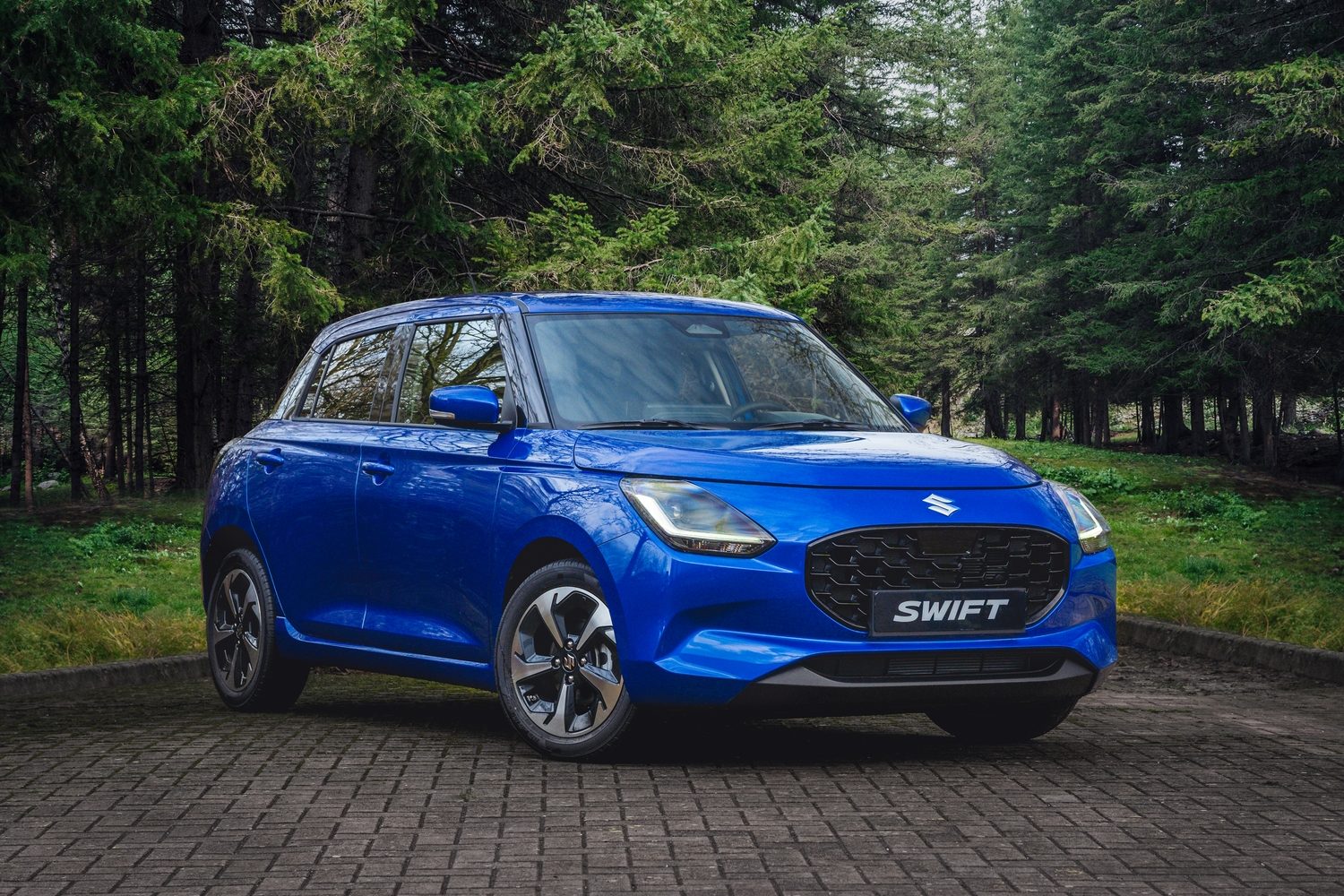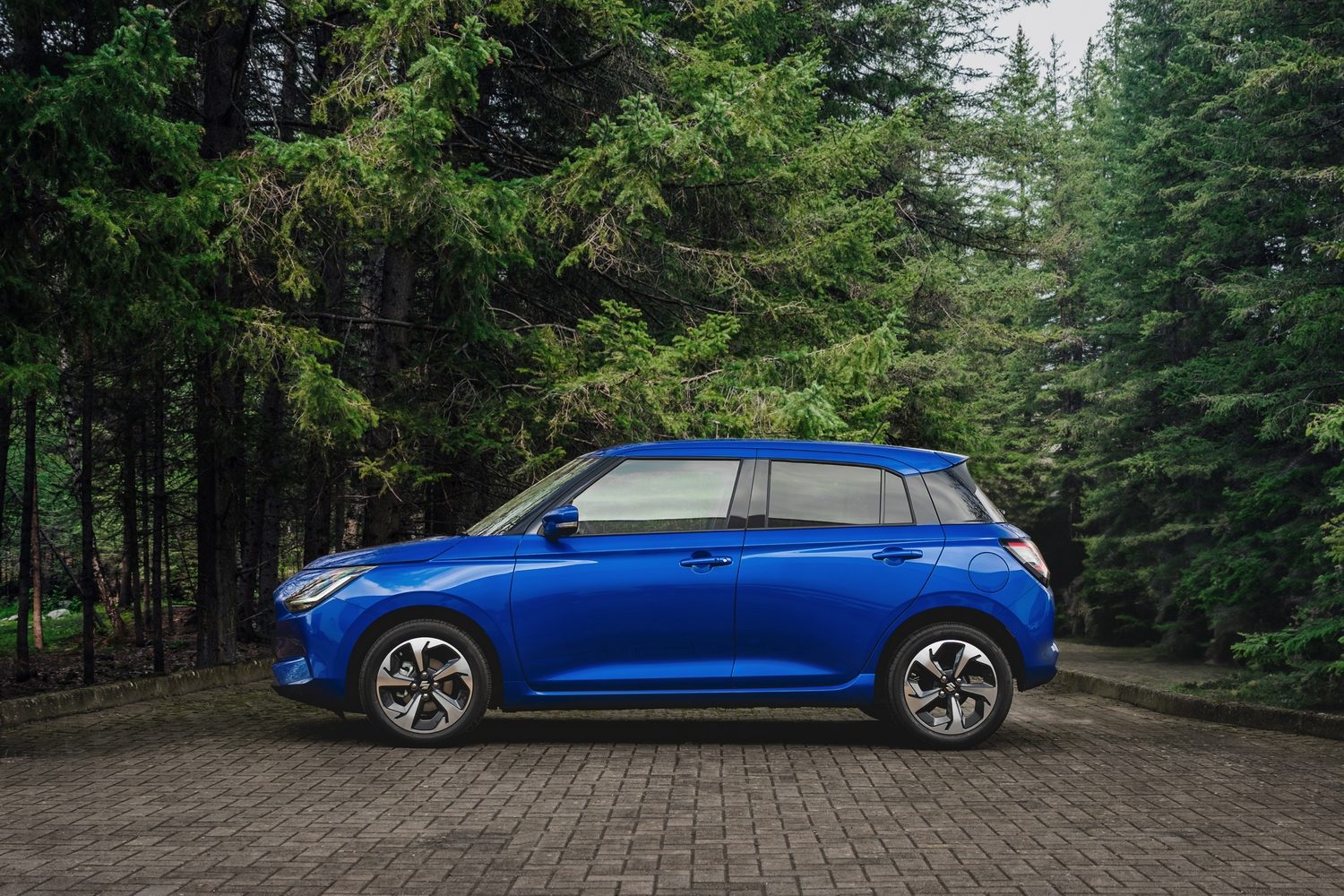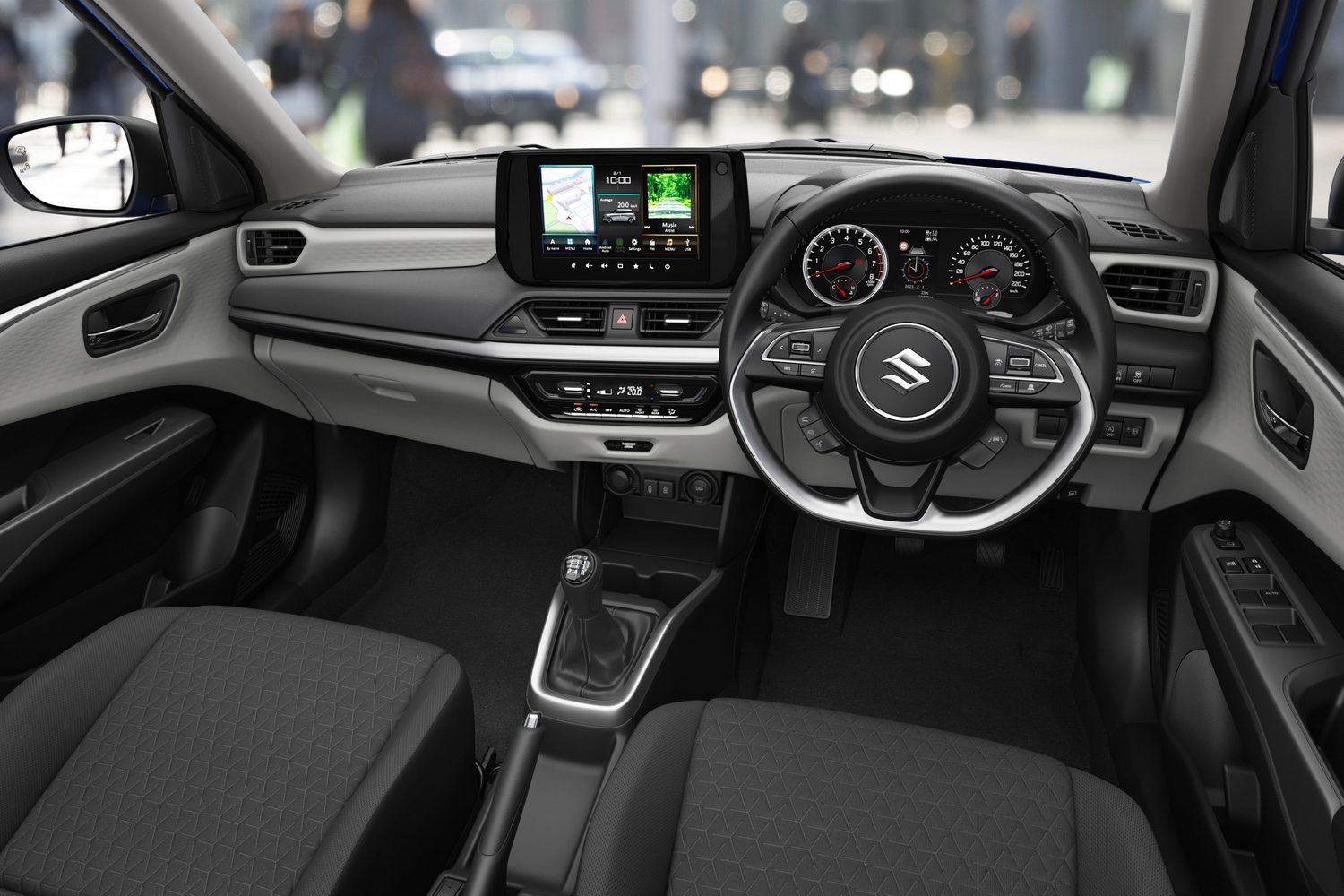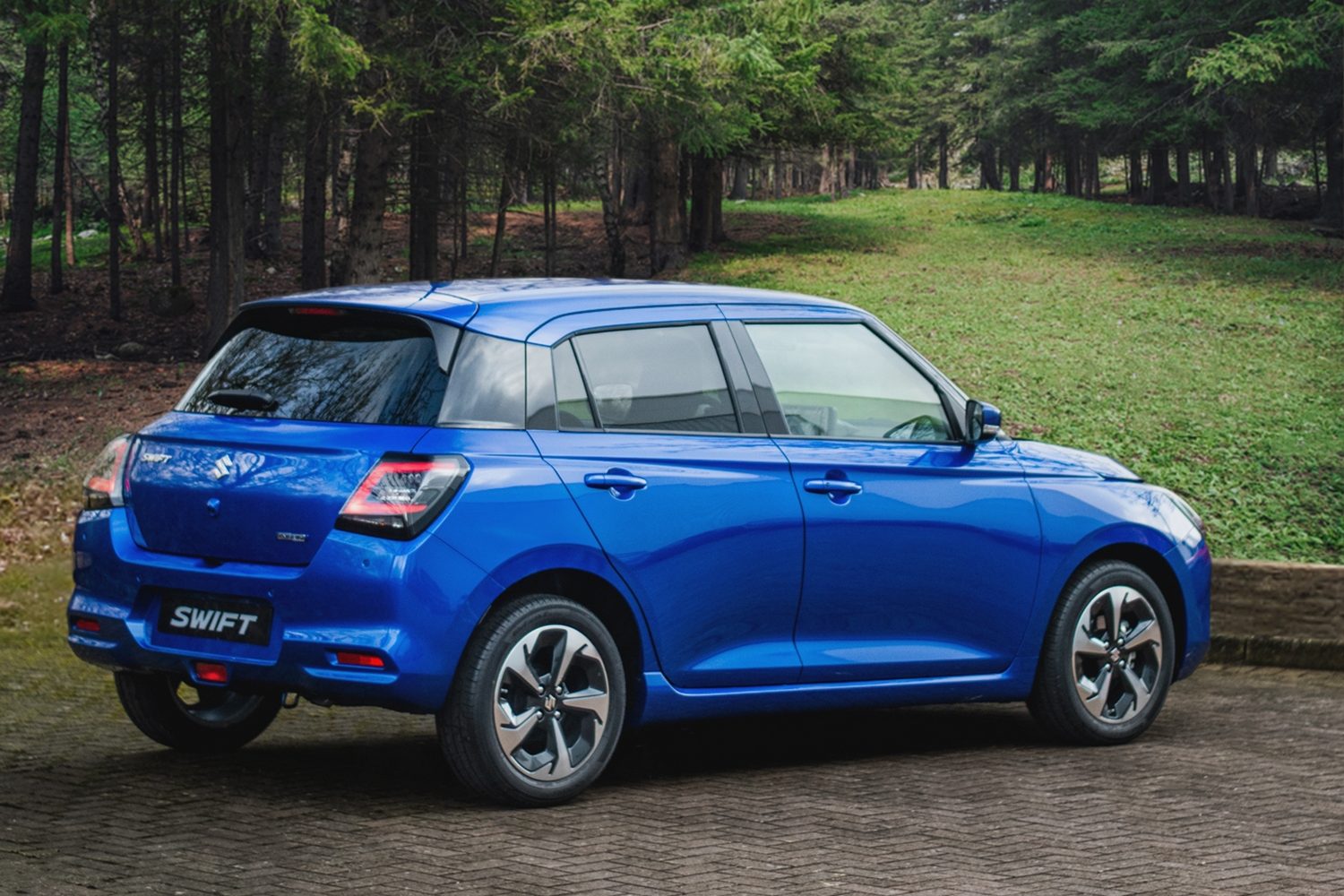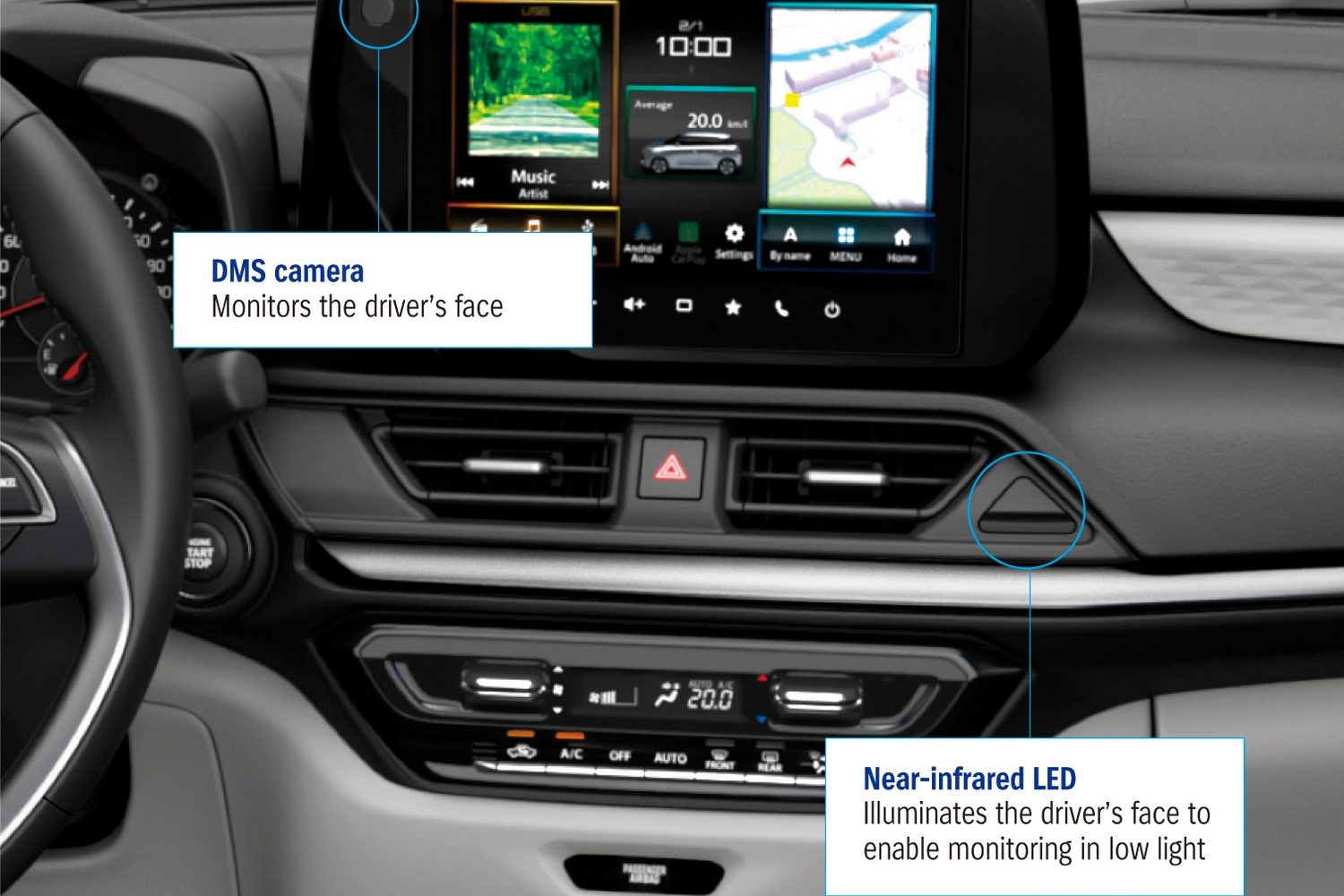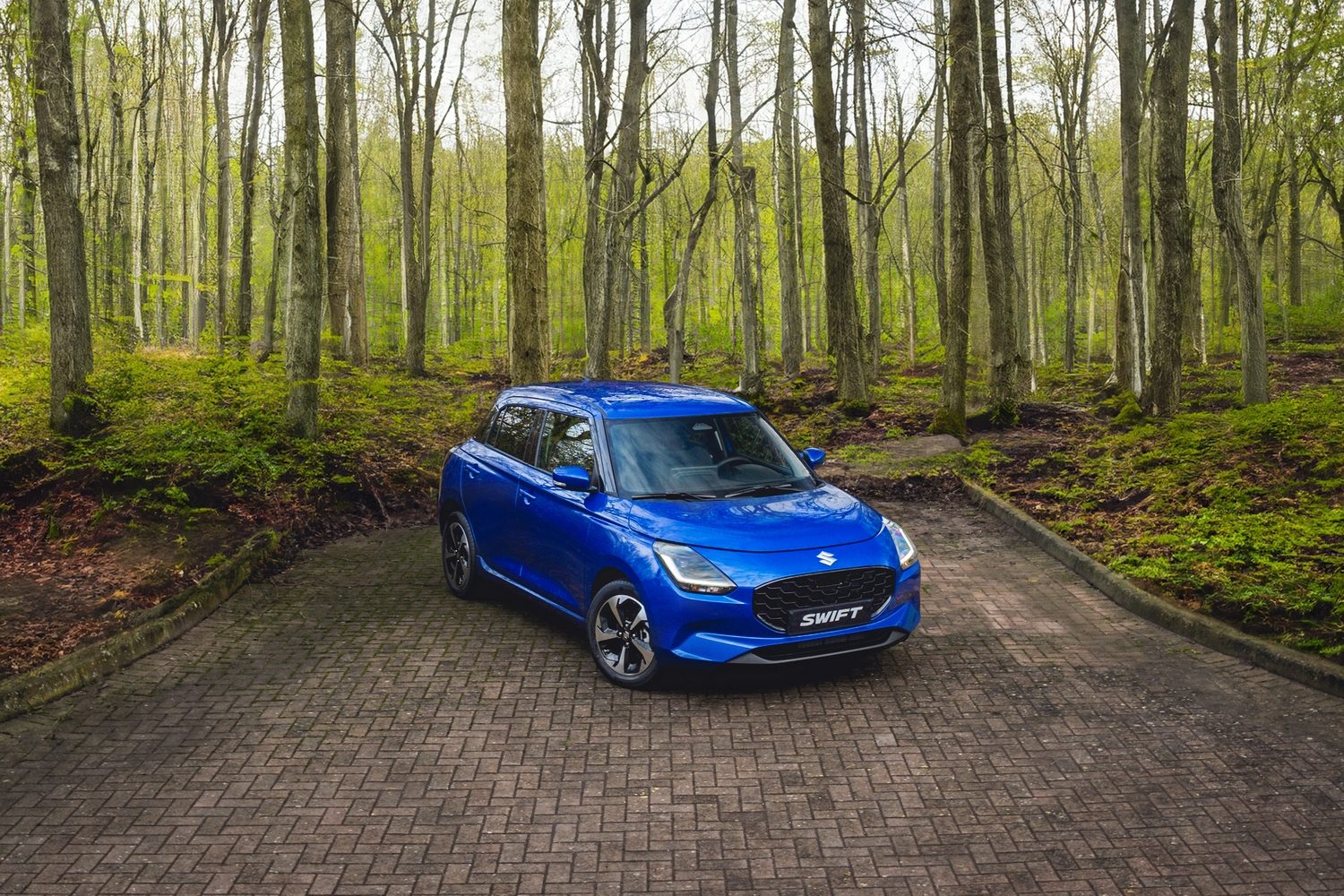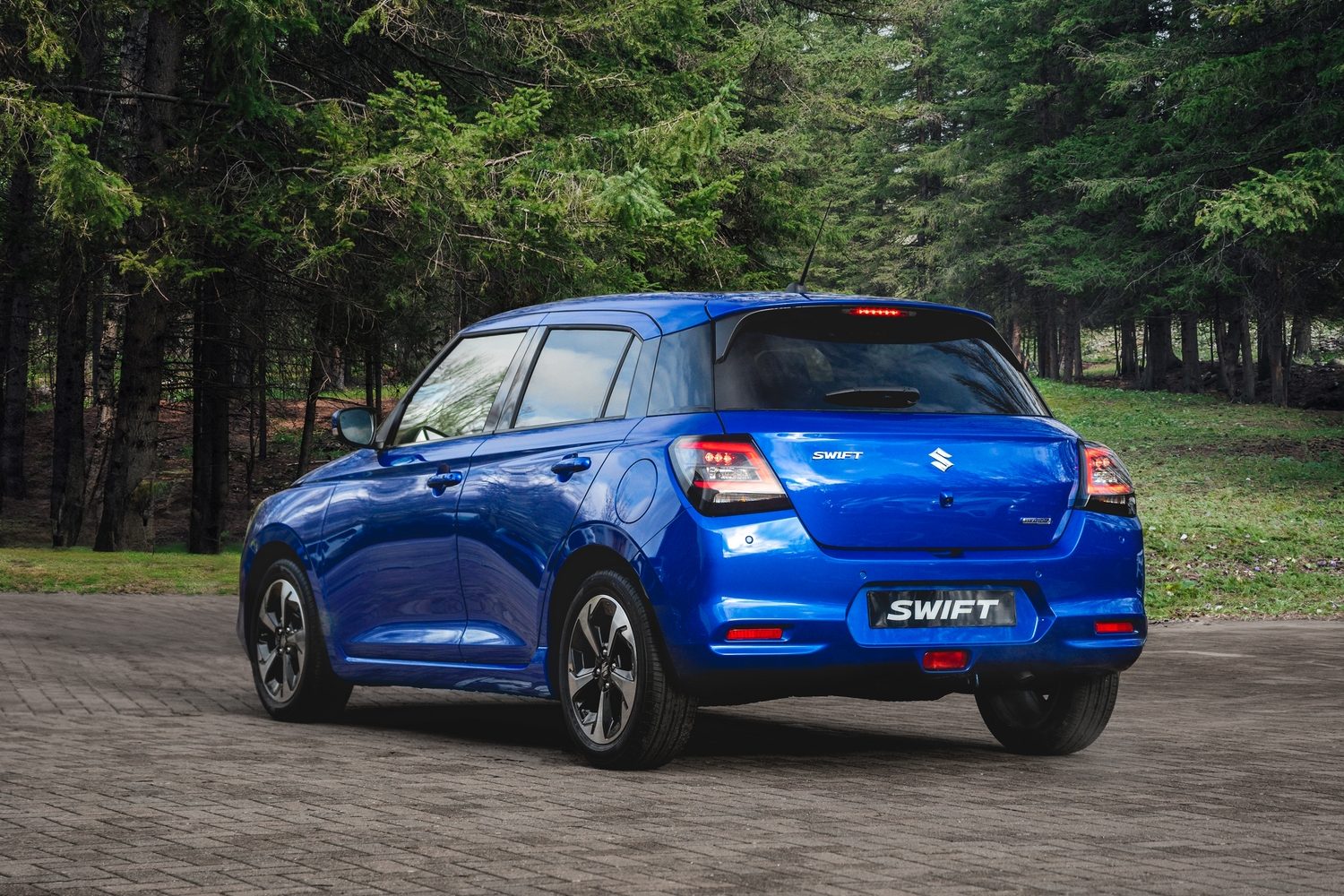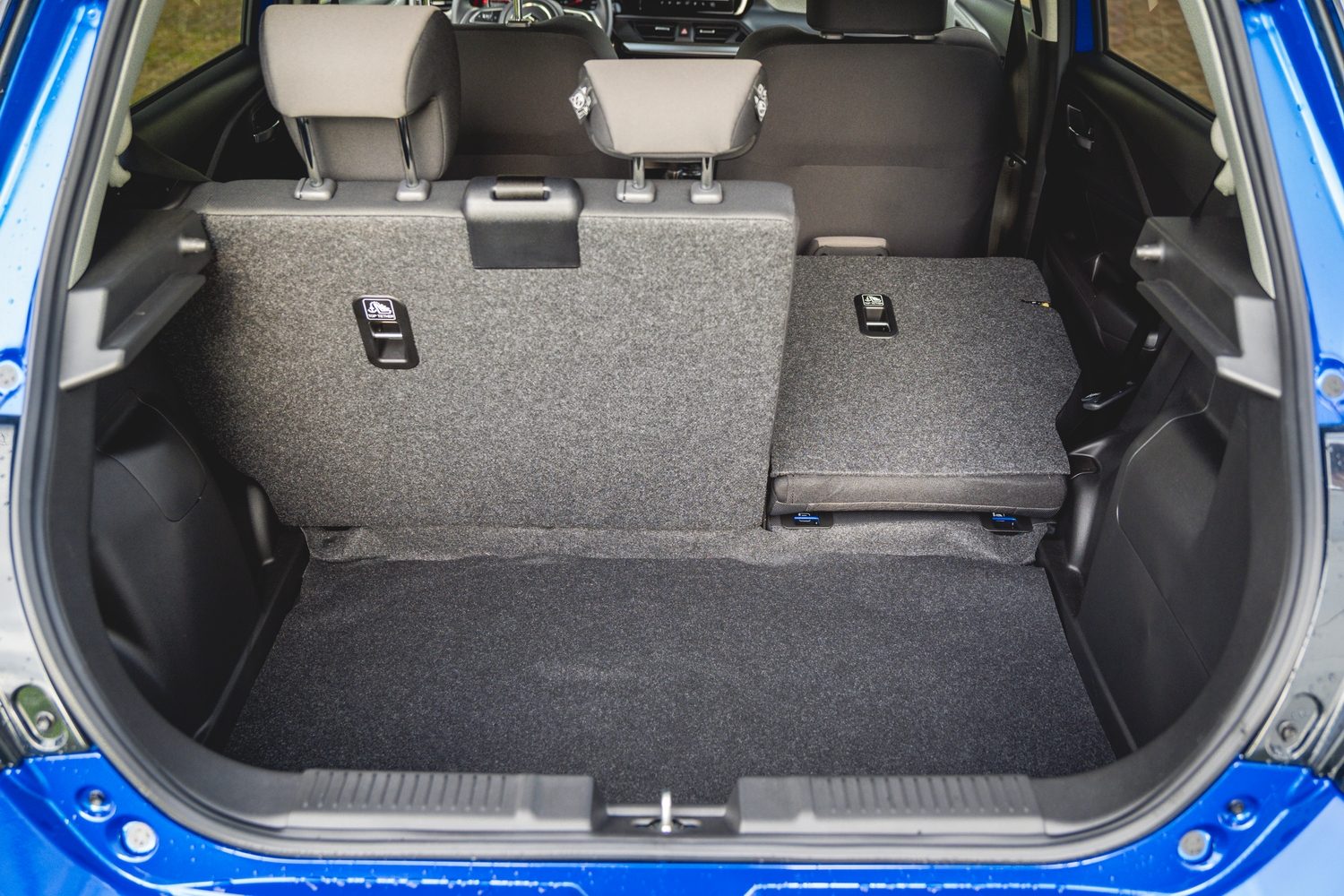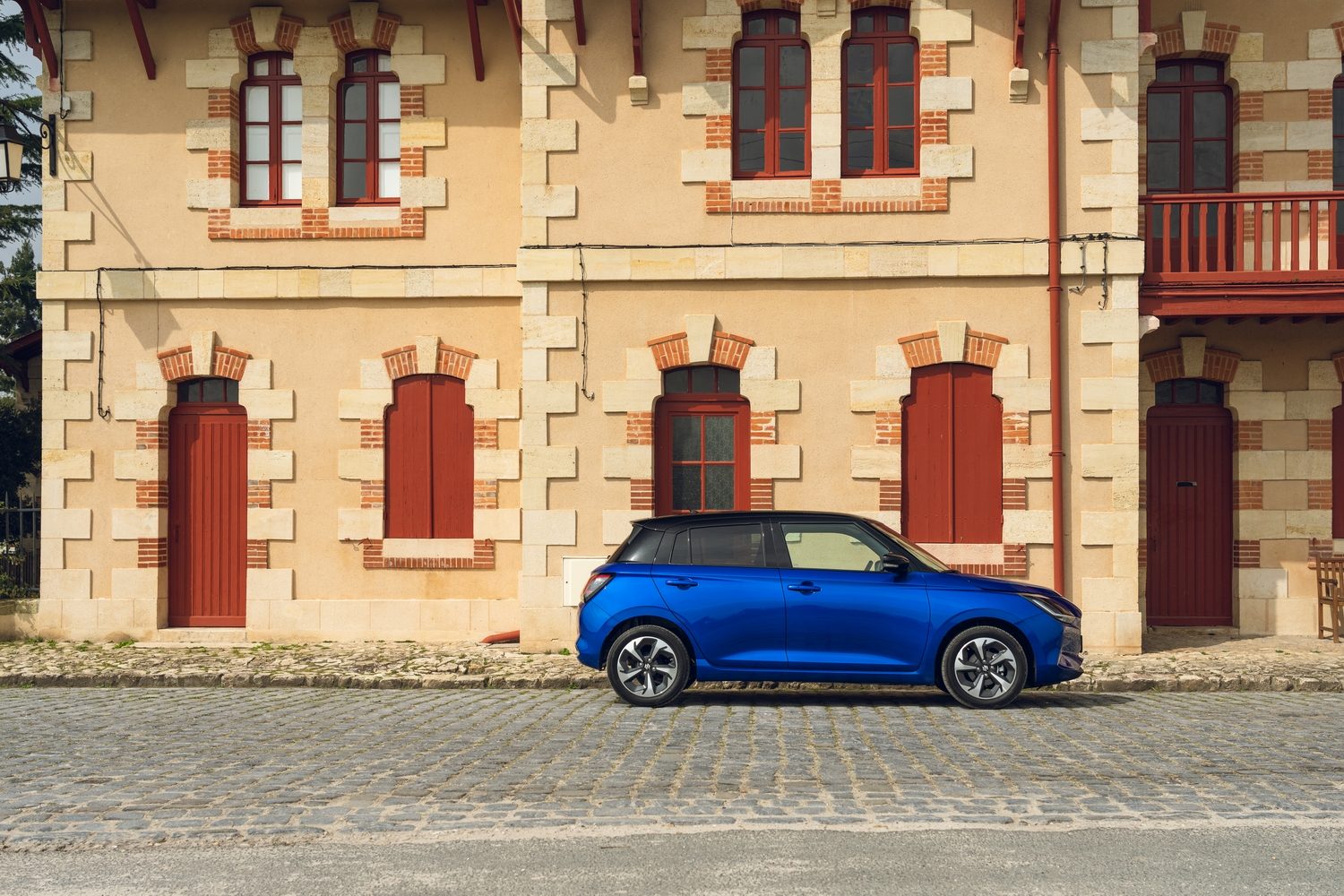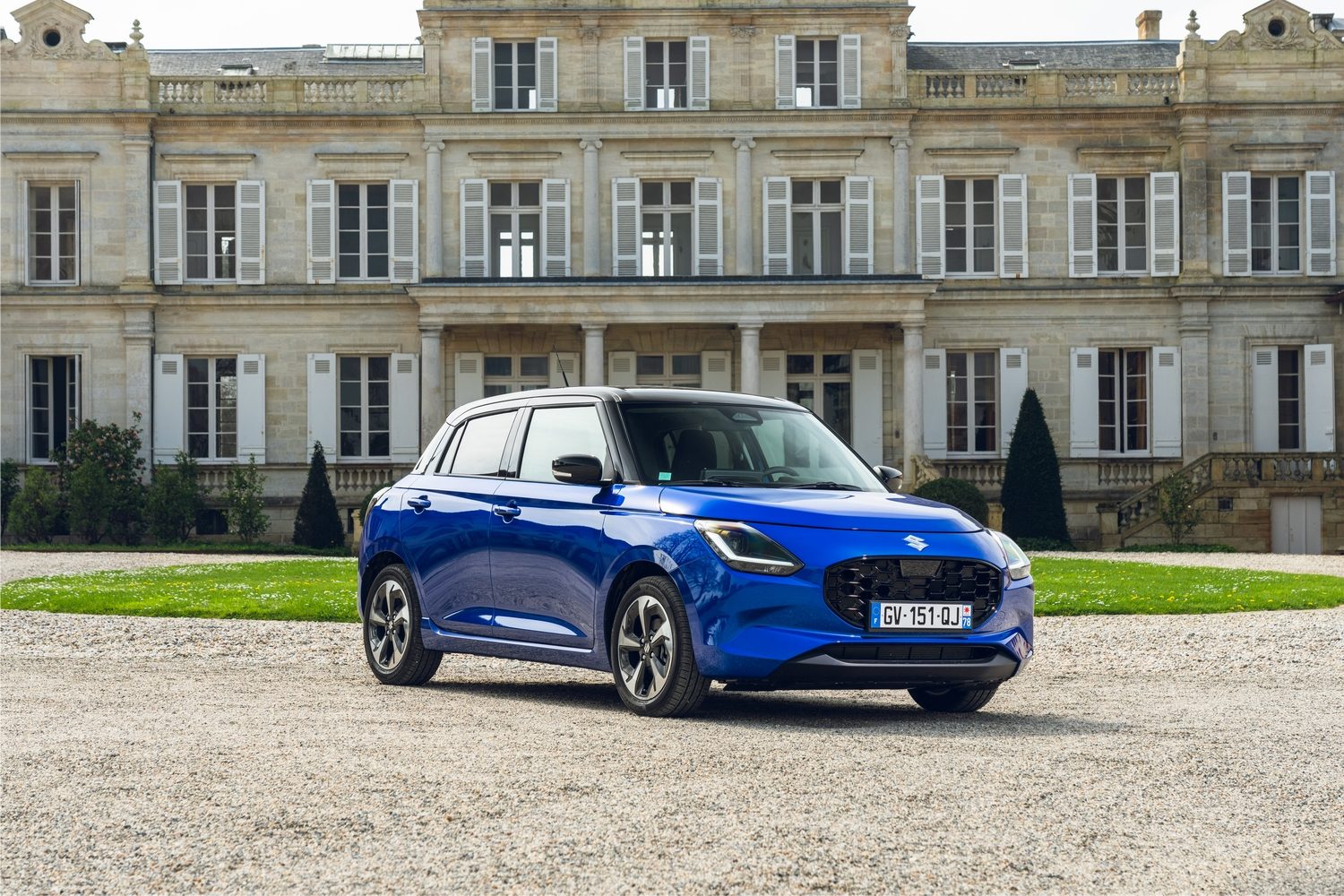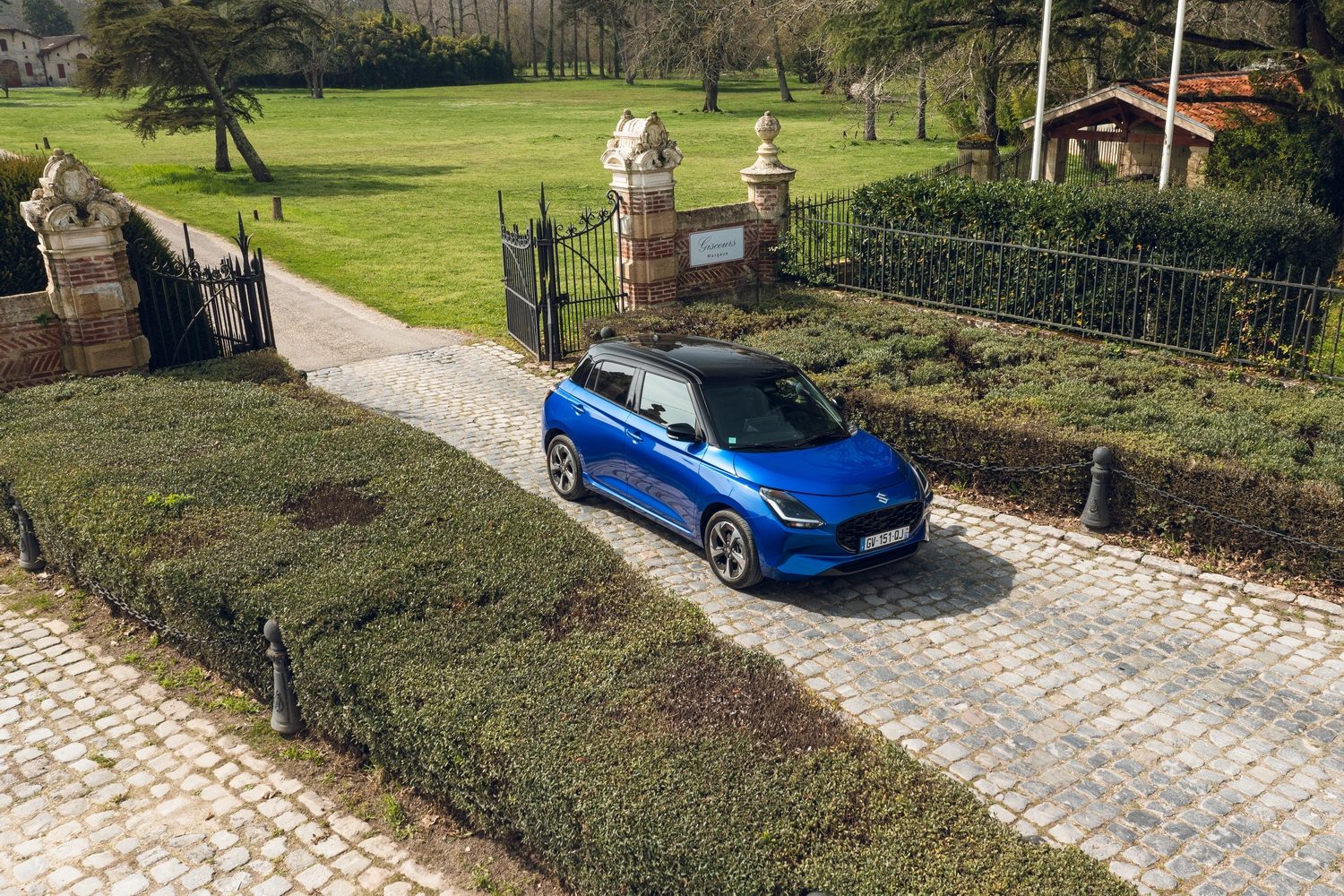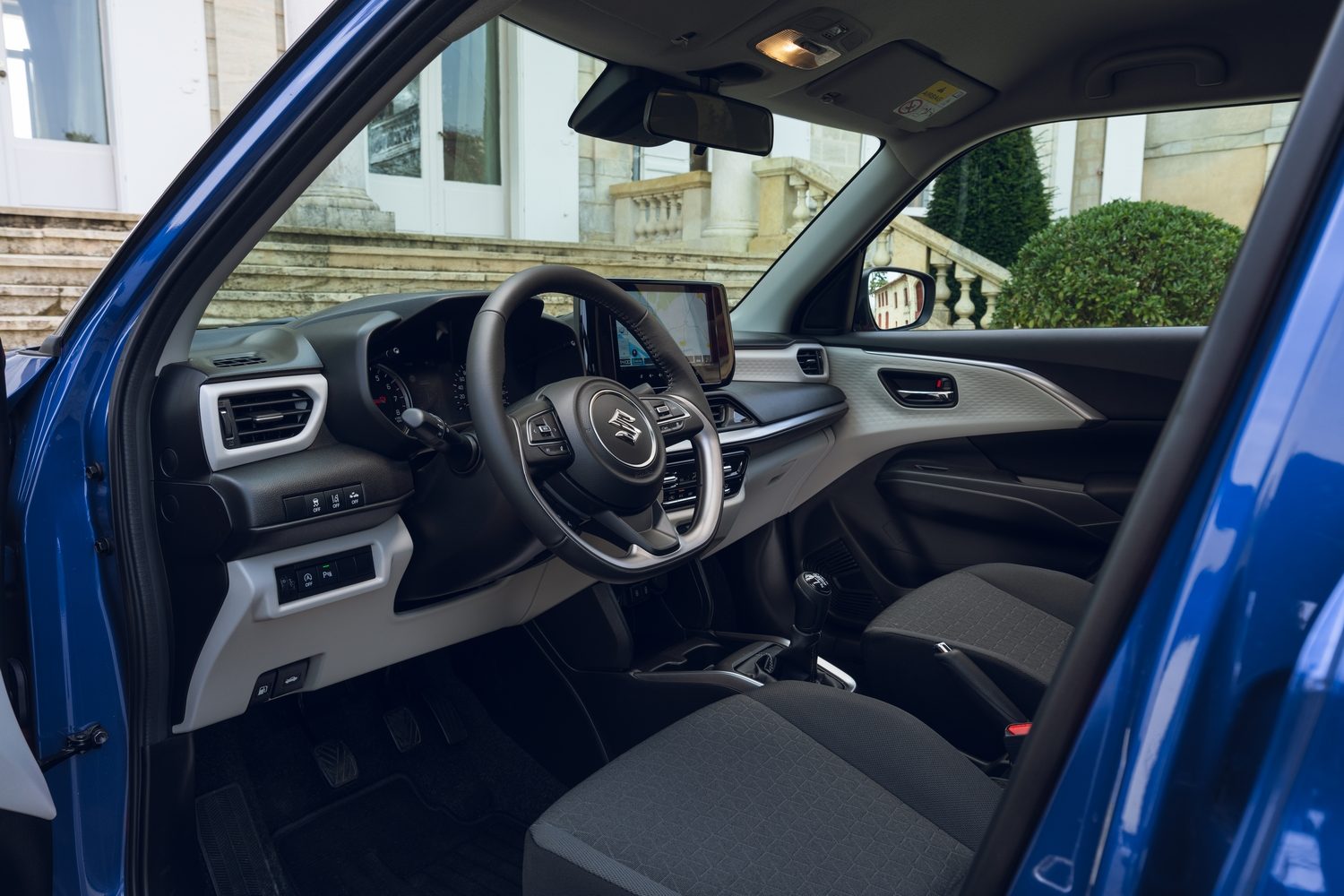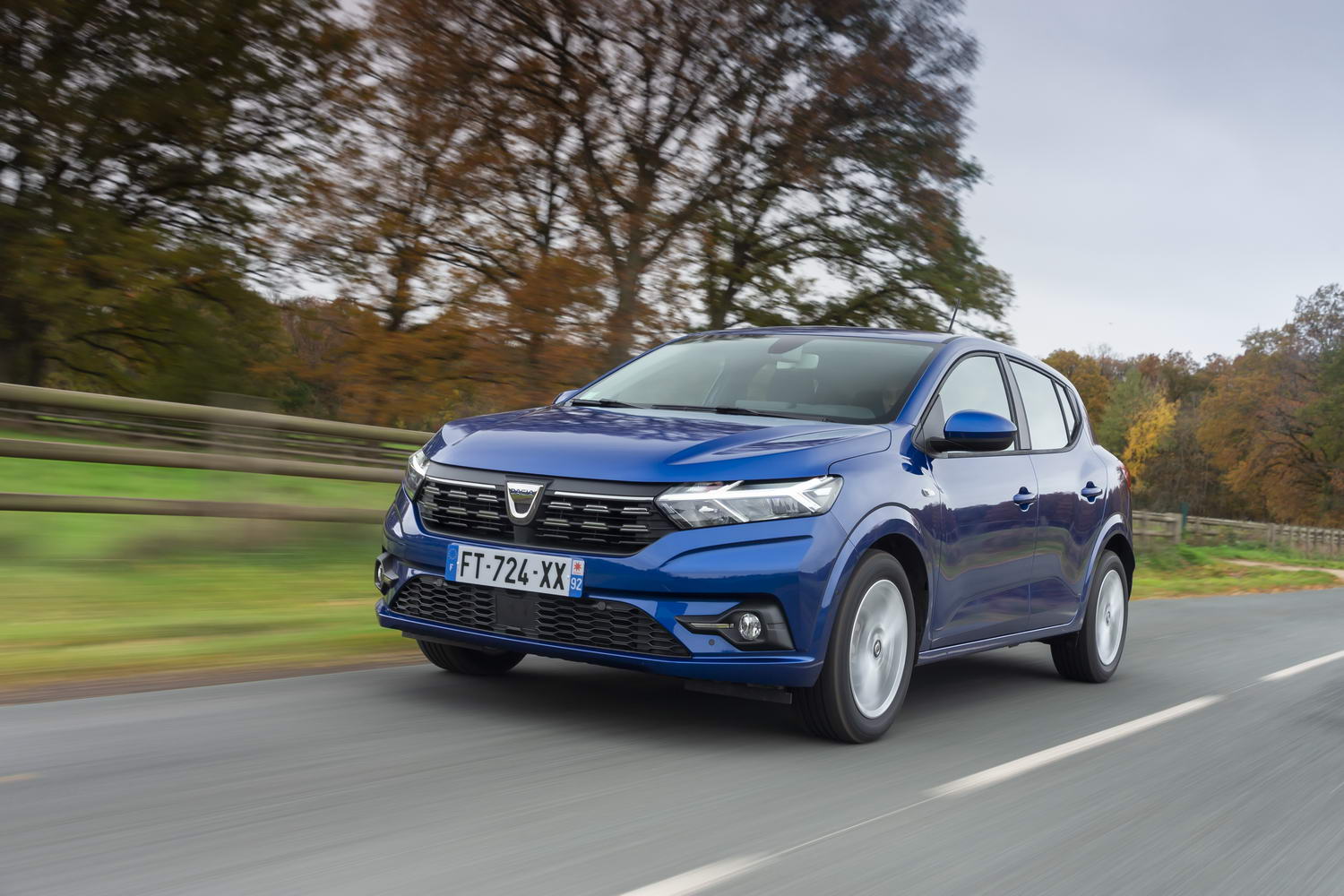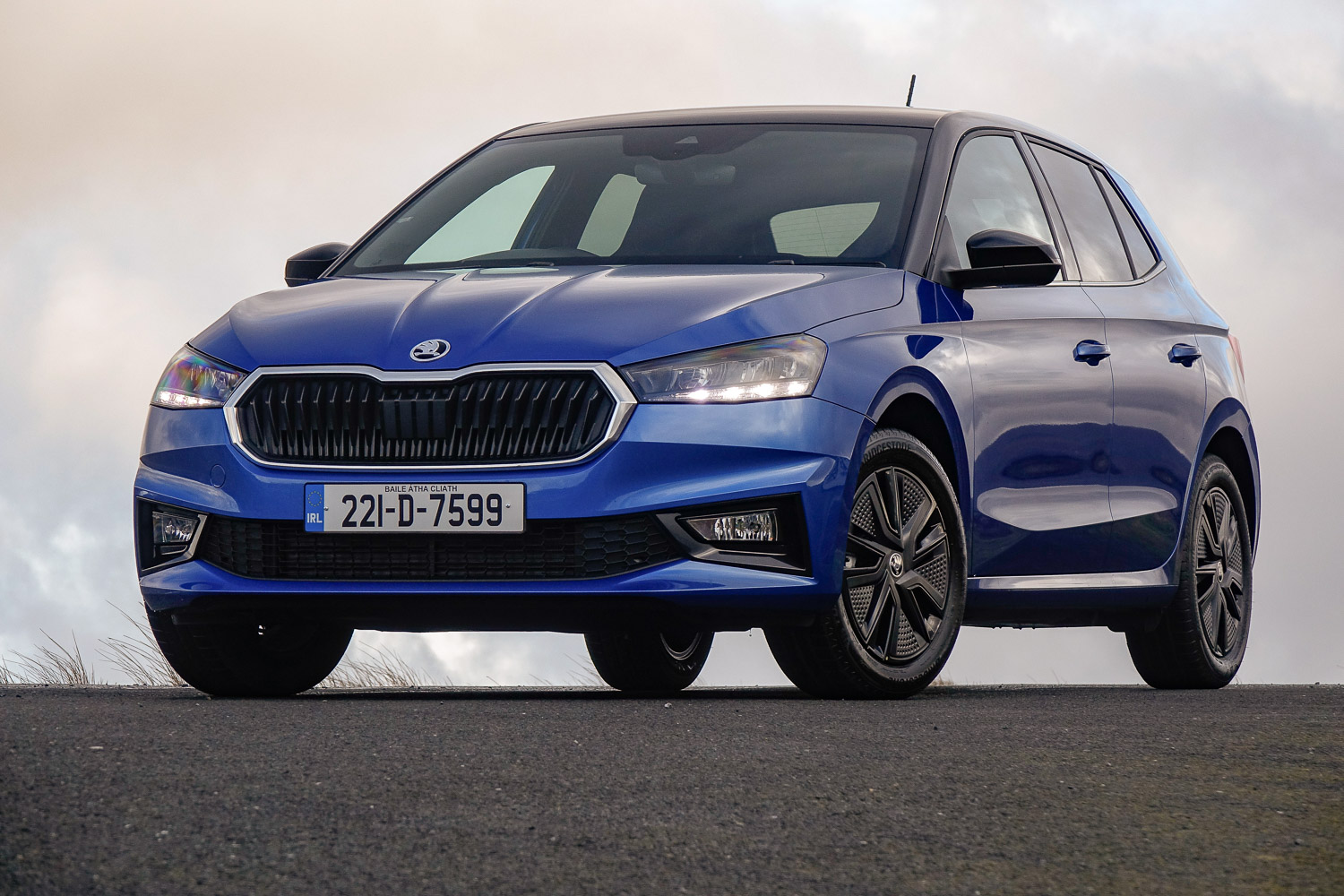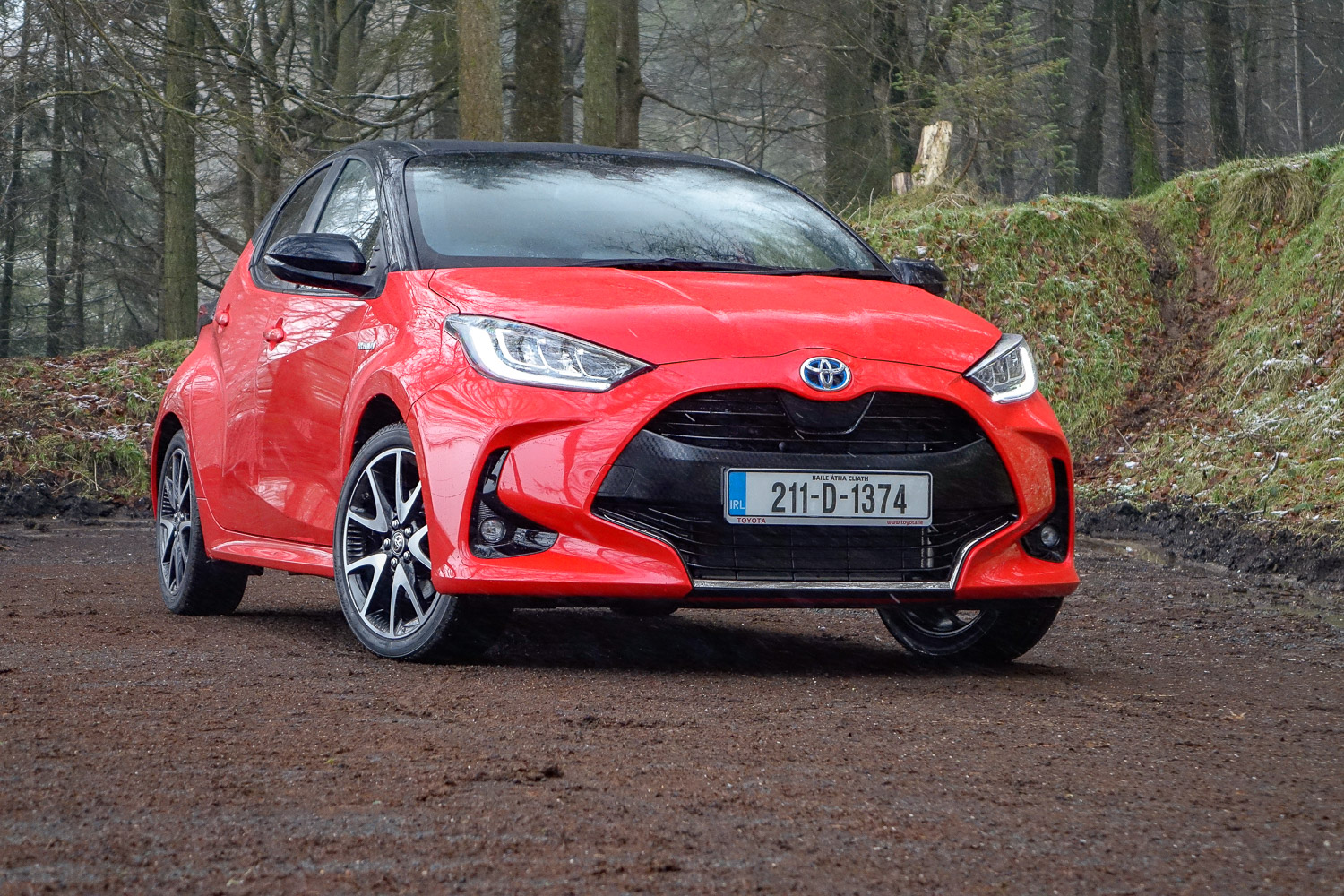Suzuki claims to have spotted a gap in the market. As other companies - most notably Ford - vacate the small hatchback sector and turn their attention to bigger electric vehicles and SUVs, Suzuki plans to double down on its commitment to small, petrol-powered cars.
Which is where the new Swift comes in. In a bid to capitalise on Fiesta owners' inability to replace their existing car with another new Fiesta, Suzuki has refreshed its compact hatch, promising buyers more tech, better efficiency and more modernity. But is the new Swift worthy of consideration?
In the metal
Even Suzuki has described the new Swift's design as an "evolution" of the old car's image, but it hasn't necessarily evolved in the most attractive direction. Although the grille and the lights clearly feel like a twist on the previous generation's design, the pronounced belt line gives the impression this is a car designed in two halves. There's a very modern glasshouse, with wraparound-effect windscreen pillars and a new spoiler, while there's a kind of clamshell bonnet design, but beneath that it looks quite old-school. The result isn't especially cohesive, and we think it's uglier than its predecessor. More than that, the car looks like a cheap facsimile of its precursor, and that's difficult to forgive. That said, the basic shape is attractive enough, so maybe it will grow on us.
Suzuki has had more success inside, where the Swift certainly feels more modern than its predecessor. Anyone familiar with the old car's infotainment system will be delighted to hear there's a new touchscreen, which uses much the same software as that of the latest-generation Suzuki S-Cross, and the dashboard design has been thoroughly updated.
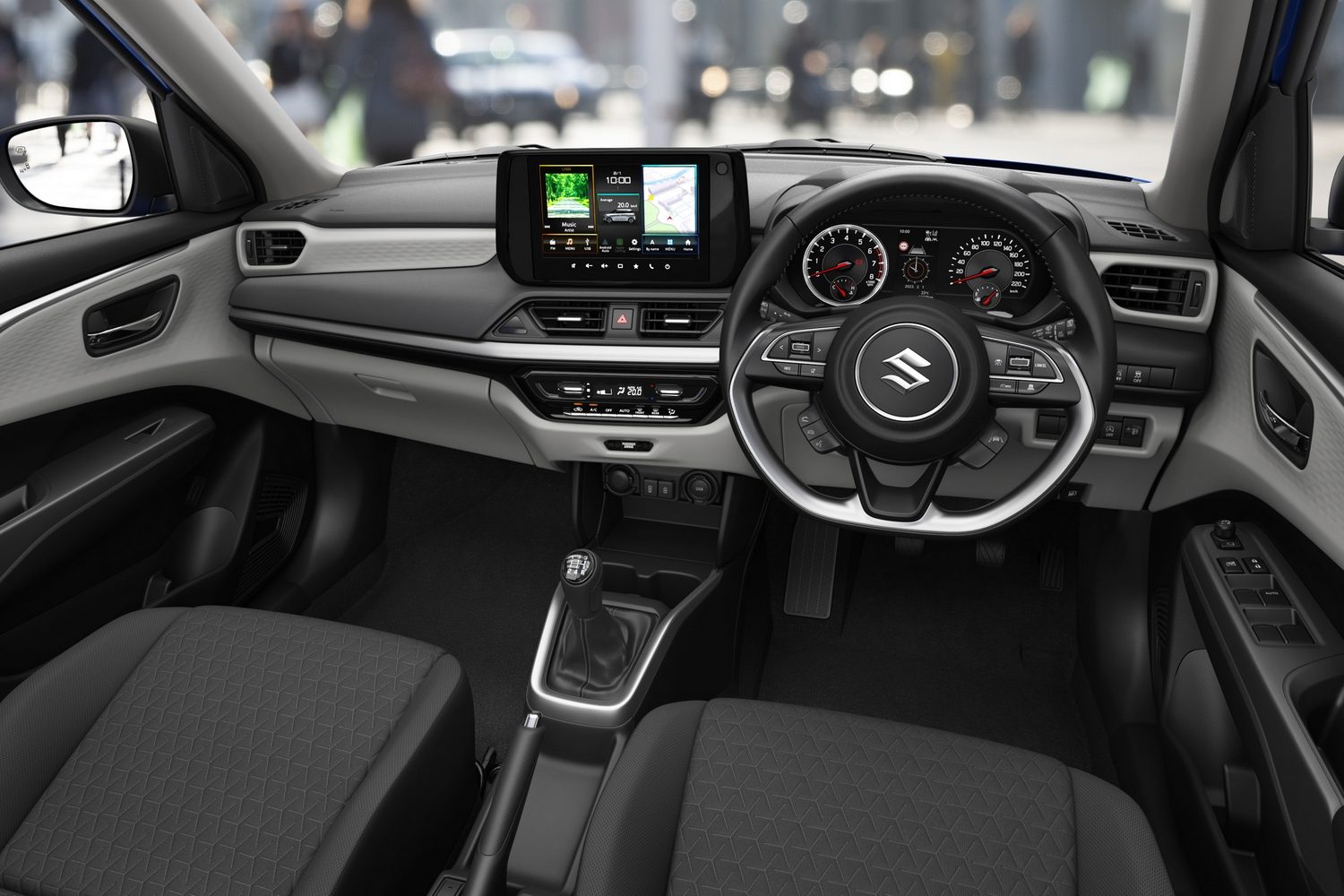
Most noticeable is the swathe of pale trim across the width of the dash. It brightens the interior no end compared with the old car's slightly austere cabin, and it has some 3D texturing around the air vents to make it feel more upmarket. The effect works to a point, but Suzuki is intent on keeping weight to a minimum, so though the car feels very robust, there's still a degree of cheapness (and therefore lightness) to the cabin materials.
That said, the design is definitely more modern, and central to that is the new touchscreen. Angled towards the driver by eight degrees, it's a much bigger and more up-to-date system than that fitted to the old Swift, but it's hardly cutting edge. The graphics are still blocky, the navigation system looks ancient and the responses can be a bit laggy now and then. But it does come with wireless Apple CarPlay and Android Auto smartphone integration tech, which makes it much easier to use. And for most owners, that's probably what they'll do most of the time.
We've become quite accustomed to such systems being accompanied by digital instruments and head-up displays, even on small cars, but the Suzuki sticks solidly by classic analogue dials, even in the range-topping Ultra model. Obviously, it's a tried-and-tested way of doing things and it works without a problem, but it feels a bit old-fashioned these days, particularly in a new model that's trying to beat the best in the class.
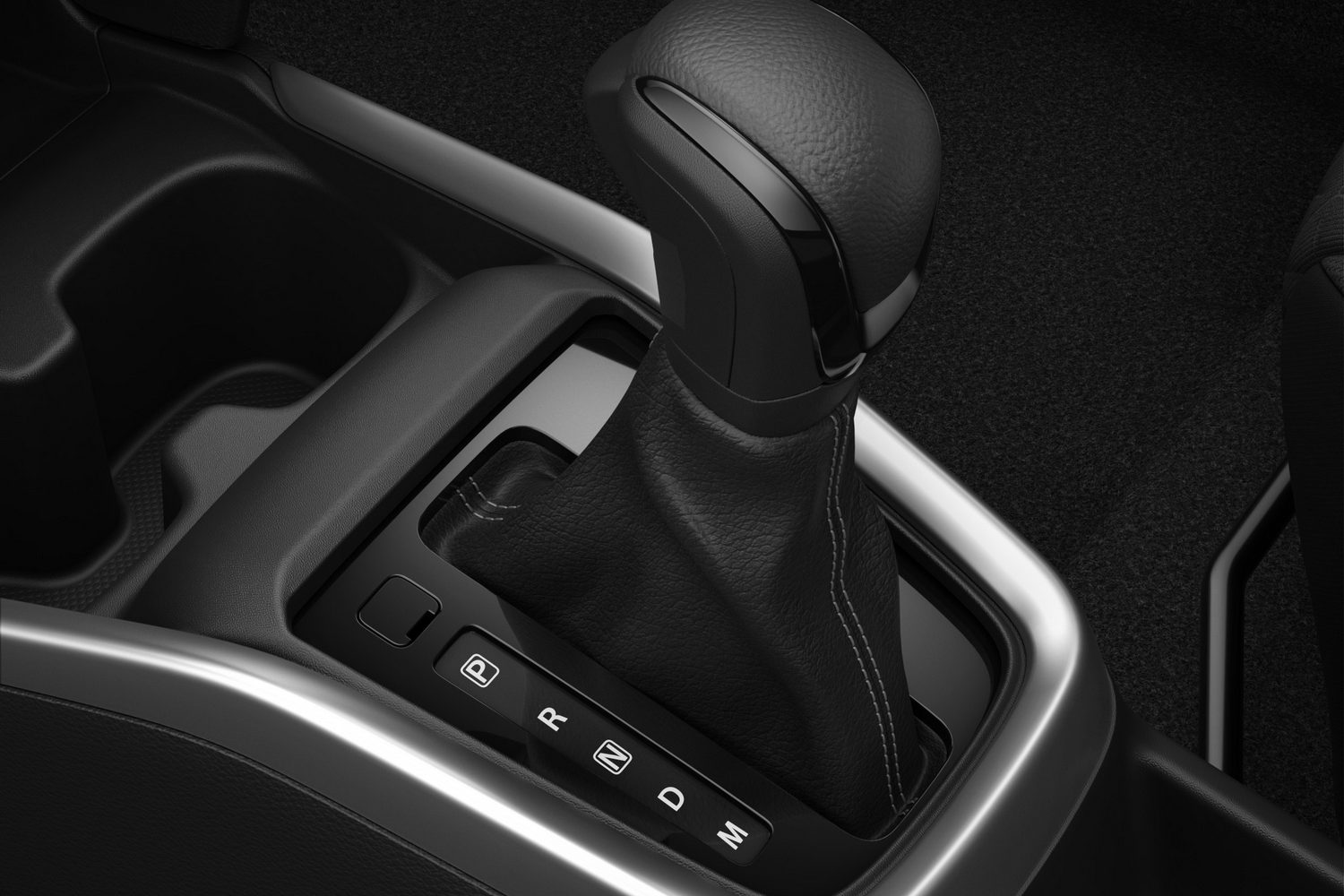
Fortunately, while the infotainment systems might not be leading the way, there's nothing wrong with the way the Swift is built. Yes, it's been built to a price and there are some slightly thin plastics in there, but once you accept a Mazda or a Volkswagen is more tactile, you can appreciate the Suzuki's rugged robustness. Every switch feels solid, the door closes with a bit of a clunk and though everything might be lightweight, it doesn't feel as though it's loose or going to fall apart any time soon.
As well as being well built, the cabin is also fairly roomy, with more than enough space for four quite tall adults to sit comfortably. Even the tallest passengers will fit, although they might find it a bit cramped on a long trip, particularly if they're sitting behind someone else who's particularly long of leg. On a shorter journey, though, the cabin ambience isn't too shabby, with comfortable seats and a surprising sense of airiness.
Less impressive is the boot space, which measures 265 litres when all five seats are upright. That's much the same space you got in the old Swift, but it's well behind the best in the class. The Skoda Fabia's boot is more than 100 litres larger, and even the comparatively small luggage bay in the Toyota Yaris is 20 litres up on the Swift's.
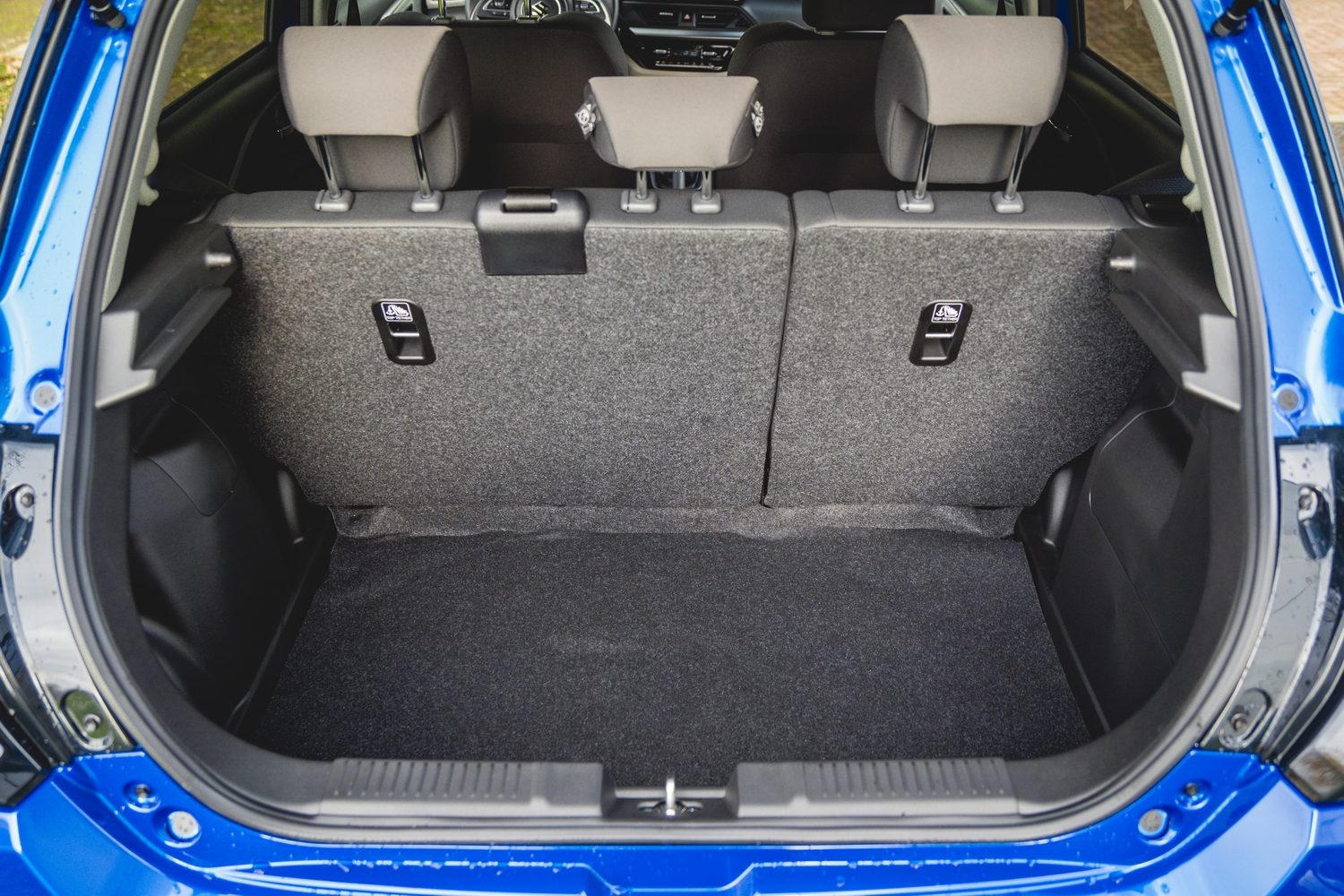
Driving it
The new Swift is available with just one engine - at least for the time being - and it's very different from the engine fitted to the old car. Although it's still a 1.2-litre petrol-powered unit, that displacement is split between just three cylinders, rather than the four seen previously, and the whole thing is helped by an integrated starter generator that gives the engine a helping hand under load. Yes, the badge on the back may read 'Hybrid' but this is a mild-hybrid in truth, and it's a very mild hybrid, at that.
Mild or not, the hybrid system and the three-cylinder engine work together to haul a lightweight car. The Swift weighs well under 1,000kg, and that allows it to provide quite impressive economy, with a noticeable improvement on the previous model. On the official economy test, the manual Swift uses a mere 4.4 litres of unleaded every 100km, and just 99g of carbon dioxide are emitted from the tailpipe every kilometre.
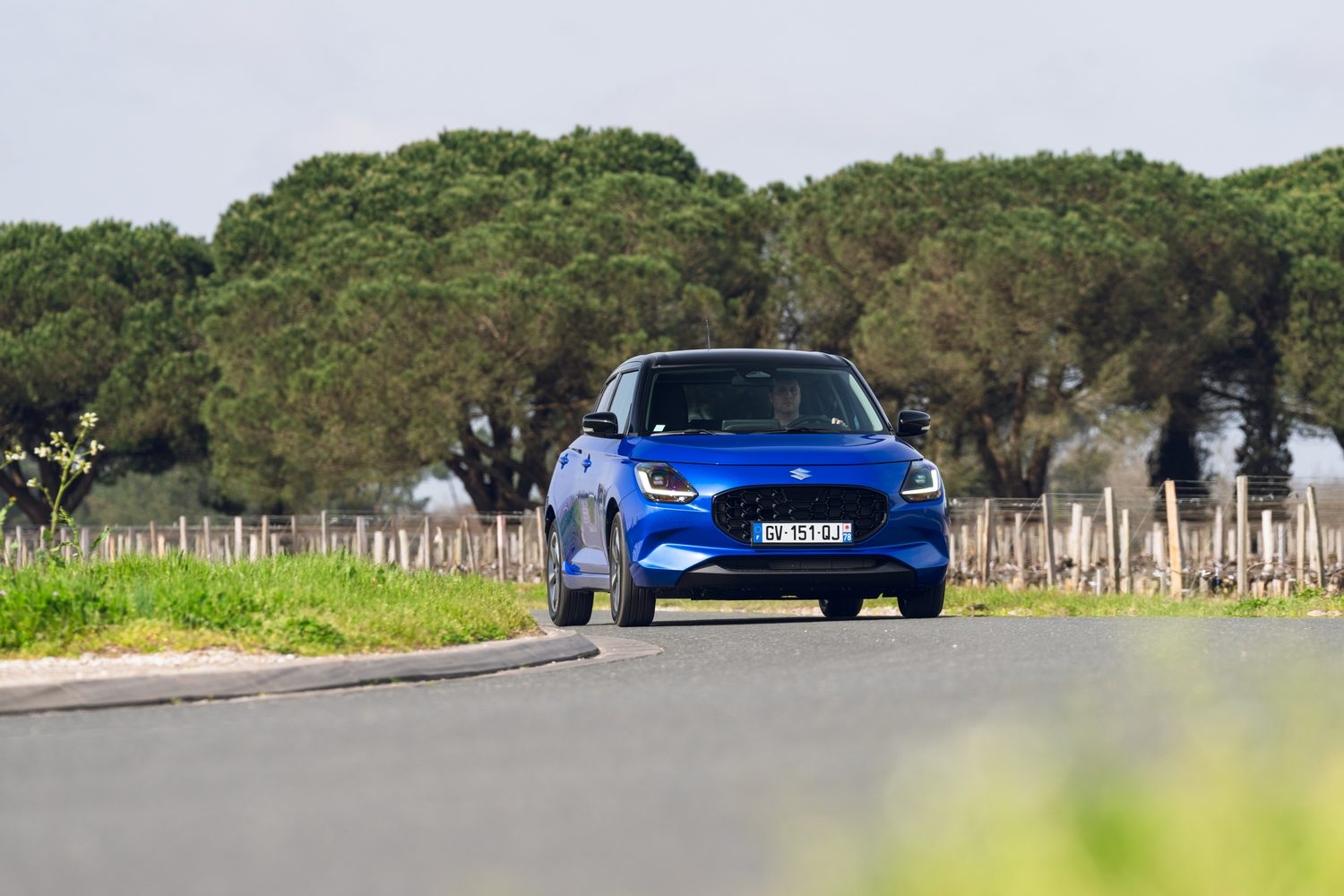
If you're wondering why Suzuki hasn't gone harder on hybrid - or indeed made the Swift electric - you're not alone, but the company is adamant that mild-hybrid technology is what the customer wants. With small electric and hybrid vehicles still proving costly and lacking in the range department, the company reckons customers want a small car with an efficient petrol engine, rather than a fully electric vehicle.
Anyway, the new 1.2-litre engine is certainly efficient, and it's also more powerful than its predecessor, although everything is relative. With 82hp, the Swift is no hot hatchback, but Suzuki reckons performance is improved. Customers get to choose between a five-speed manual gearbox or a continuously variable transmission (CVT) automatic for those who prefer two-pedal driving - neither offers exceptional straight-line speed. However, the Swift feels faster than the slovenly official figures would suggest, and we suspect Suzuki has undersold the car's performance a little. Not that owners will mind too much as the car is fast enough to keep up with everyday traffic.
More than that, though, it's quite a pleasant thing to drive. The old Swift handled with a bit of verve, but that was about the limit of its abilities, whereas this three-cylinder engine now offers a little more aural enjoyment. It doesn't sound especially sporty, but the little engine is far smoother, quieter and more refined than its predecessor. And it still gives an eager growl when you put your foot down.
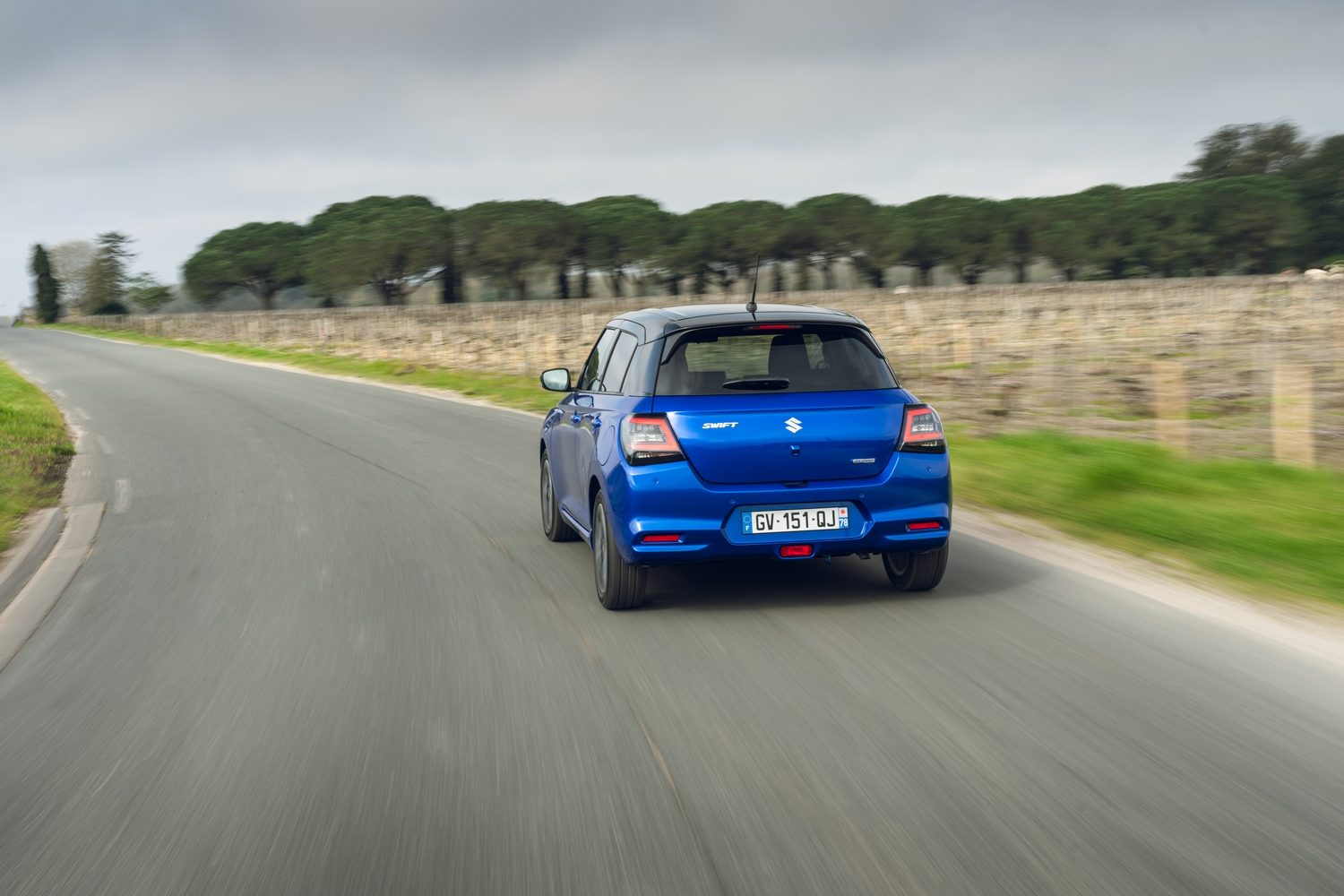
As before, the Swift handles neatly, although it doesn't quite engage like a Fiesta used to. Suzuki has improved the steering slightly for better responsiveness and grip is more than sufficient, while decent body control keeps the car feeling fairly level in corners or under braking. The brakes themselves are strong, too, with a progressive feel through the pedal and more than enough power to slow the lightweight Swift.
Unfortunately, providing that body control has left the Swift feeling slightly stiff compared with some of its rivals, and the ride suffers at low speeds. That's a problem, because that's where the Swift is likely to spend most of its time, but fortunately the problem isn't too dramatic. Yes, potholes, drain covers and speed bumps will occasionally send a shockwave through the cabin, but the Swift usually manages to at least round off the edges of the bumps, even if the imperfections still make their presence felt, and it never feels unsettled. It's better at speed, too, but it never feels as compliant as a Peugeot 208 will, for example.
Still, the Swift is quite a likeable and pleasant car to get along with, and the newfound refinement has made it a more competent companion on longer drives, which adds to the car's usability, but it's still at its best at urban speeds.
We didn't get to try the automatic Swift, but special mention should be reserved for the five-speed manual gearbox that comes as standard. The lever looks a bit odd in the cabin, but the shift action is nice and precise, the lever moves smoothly through its gate and a light, yet easy-to-modulate clutch makes it very easy to use. Unless you desperately need a two-pedal car, we see no reason to choose anything other than the manual.
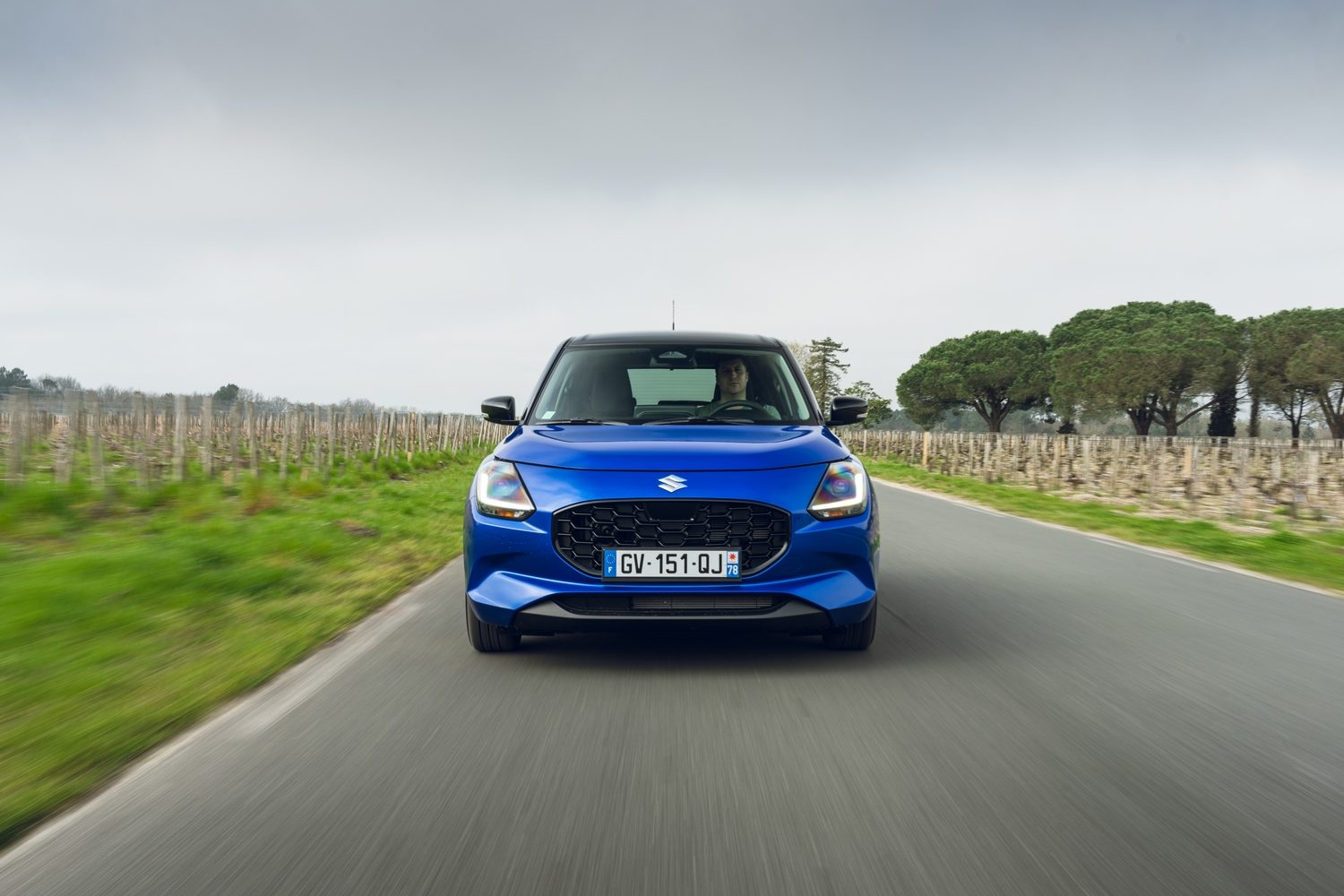
In other markets, including the UK, sticking with the manual also frees up the option of an all-wheel-drive Swift, which is designed to provide a bit more security in inclement weather and slippery road conditions. However, Suzuki has left it out of the Irish line-up - presumably due to the increased consumption and emissions - which might be a shame for some drivers in more rural locations.
What you get for your money
As part of Suzuki's strategy, the company aims to focus on value, and the Swift certainly delivers on that front. The base model is the Motion, which comes with everything owners really need. Air conditioning, cruise control and heated seats are all standard, along with the touchscreen navigation system that includes a reversing camera and Android Auto and Apple CarPlay smartphone integration. Keyless entry is standard, too, and you get automatic lights and wipers, plus 16-inch alloy wheels.
And all that will cost you is just €21,495 in Ireland, assuming you want the manual gearbox. That makes the Swift noticeably cheaper than a Toyota Yaris or a Skoda Fabia. Admittedly, the Swift gets more expensive - particularly if you want the automatic gearbox that commands a €2,000 premium - but while you might want to spend that money to upgrade the transmission, there really isn't much need to spend any more on the range-topping Ultra model. Costing €1,200 more than the Motion, it comes with automatic air conditioning and door mirrors with integrated indicators and electric folding mechanisms, but that's about your lot.
Summary
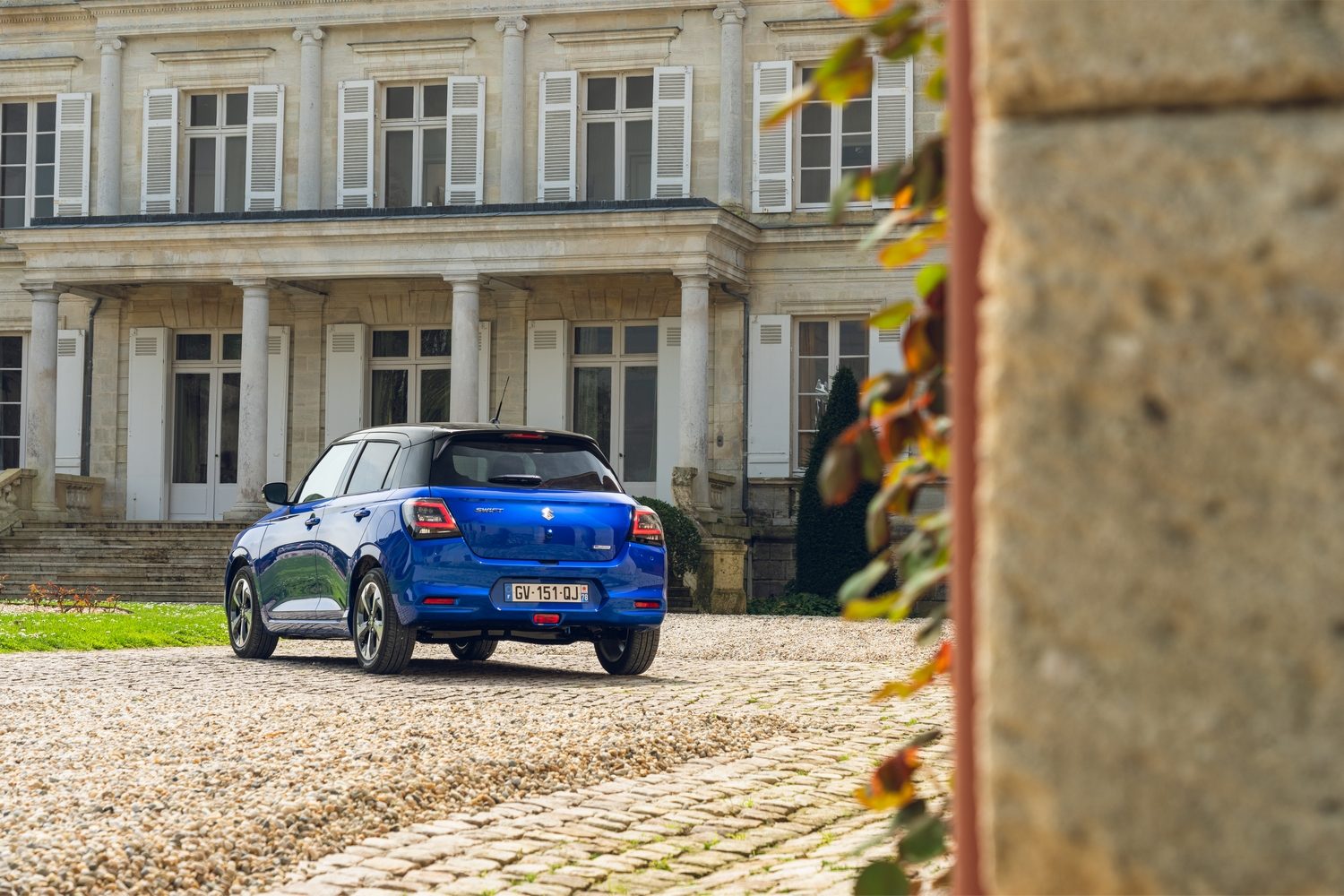
In many ways, the Swift is exactly what we expected it to be. Carrying on where the old car left off, it's good to drive and it feels a bit more modern than before, while the value for money is as strong as ever. In short, it's an improvement on its predecessor, but it occupies a similar position in the market. It still isn't as polished as a Yaris or a Polo, and nor is it as spacious, so while it's a fantastic budget option, it isn't a class leader. Nevertheless, it deserves to be popular among buyers with more sense than money.

